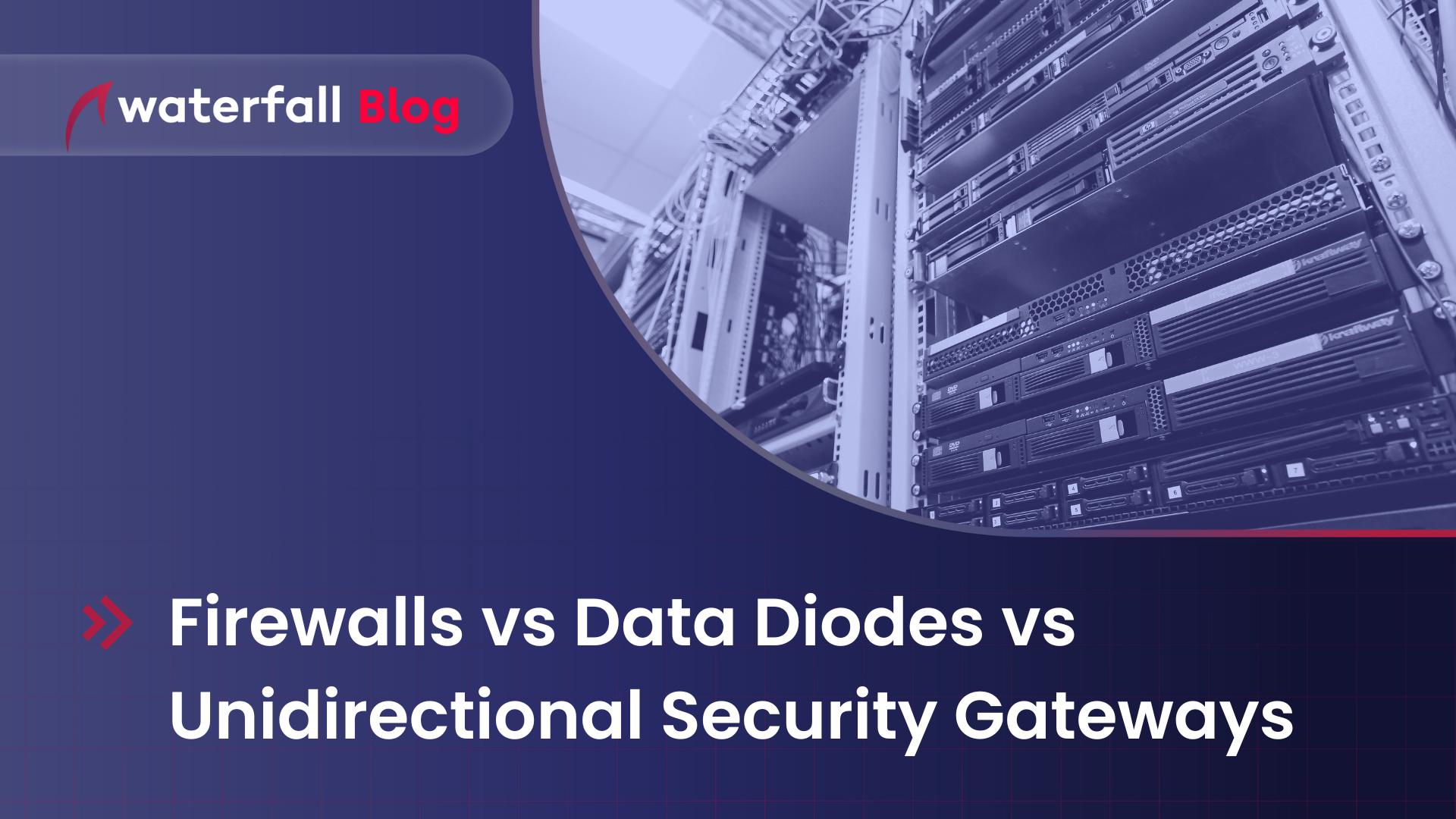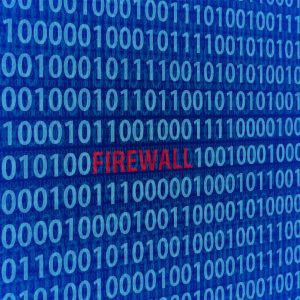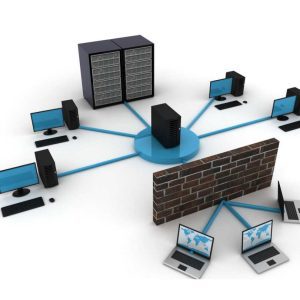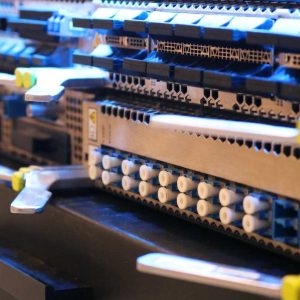Firewalls vs Data Diodes vs Unidirectional Security Gateways
Firewalls vs Data Diodes vs Unidirectional Gateways: Which is Right for OT Security?
Waterfall team

Understanding all these technologies can help businesses choose the best solution for their OT security requirements.
When securing critical OT systems, businesses often compare firewalls vs data diodes, exploring their strengths, limitations, and use cases. Understanding all these technologies and comparing firewalls vs data diodes can help businesses choose the best solution for their OT security solutions.
Firewalls vs Data Diodes for OT Security: Packet-Level Gatekeepers
What Are Firewalls? Firewalls are network security devices and software that monitor and control incoming and outgoing traffic based on predefined security rules. They act as a barrier between trusted and untrusted networks, allowing or blocking traffic based on rules that an admin user has set.
Firewalls are network security devices and software that monitor and control incoming and outgoing traffic based on predefined security rules. They act as a barrier between trusted and untrusted networks, allowing or blocking traffic based on rules that an admin user has set.
How Do Firewalls Protect Against Cyber Threats?
You can set firewalls to either block certain traffic and allow everything else, or allow only certain traffic and block everything else. The latter is the most secure option. However, there is an ongoing challenge in balancing security with network functionality. It’s important to keep the system functional for users while maintaining security. Each company and every department will have a different risk profile and therefore will also have a different set of security requirements. There’s nothing worse than blocking Sales from viewing a potential customer’s website because their security profile doesn’t match the requirements set by the finance department. Unplugging the firewall and not letting any traffic go through would also be secure, but the lack of functionality is the reason we don’t do that.
What is Packet Filtering?
Firewalls inspect data packets and analyze incoming traffic. However, this can introduce delays. There are a few common techniques firewalls use to filter traffic:
Packet Filtering: Examining packet headers, such as IP addresses and ports, to enforce security the rules that have been set by the admin. This approach provides a basic level of protection by blocking unauthorized packets. Pretty much any firewall solution offers this level of protection.
Stateful Packet Inspection: Tracks the state of active connections and determines if incoming packets are part of an established session. This method is more sophisticated than simple packet filtering, offering better security against spoofing or unexpected traffic. This is a fairly advanced method of packet filtering and firewalls that offer stateful inspection typically costs more. Stateful packet inspecting also eats up more network resources and can disrupt the speed of the network’s communication. Worst of all, stateful inspection can lead to unexpected disconnections and “half-open” connections if one side remains idle for too long.
Application Layer Filtering: Analyzes packet data at the application layer (Layer 7 of the OSI Model) to detect and block malicious activity, such as SQL injection or unauthorized file transfers. This type of filtering is crucial for modern threats targeting specific applications, and other advanced threats. Filtering the application layer is fairly resource intensive because of the deep packet inspections and payload analysis, and may result in poorer latency compared to simpler firewalls. There is also a good degree of added complexity when setting up these kinds of firewalls, especially in a large and dynamic environment.
Firewall Advantages
Firewalls vs Data Diodes for OT Security: Packet-Level Gatekeepers
Versatility: Firewalls can handle complex traffic scenarios, including bidirectional communication, making them suitable for a wide range of network activity.
Scalability: Admins can deploy firewalls in a wide range of setups, from small office networks to large and expansive enterprise systems.
Granular Control: Admins can create highly detailed security policies to regulate very specific traffic types, applications, and users.
Low Upfront Costs: Firewall hardware costs much less to buy than data diodes and unidirectional security gateways. However, it requires more staff resources to set up and manage a firewall. This makes the cost advantage negligible to all except the smallest operations.
Firewall Limitations
Firewalls vs Data Diodes for OT Security: A One-Way Valve for Data
 Misconfigurations and Vulnerabilities: Firewalls rely on having the correct configuration and the latest updates. Misconfigured rules and unpatched vulnerabilities can expose the networks to threats. Cyberattackers actively search for misconfigurations and unpatched updates because they are familiar with how to find them, and know how to exploit them.
Misconfigurations and Vulnerabilities: Firewalls rely on having the correct configuration and the latest updates. Misconfigured rules and unpatched vulnerabilities can expose the networks to threats. Cyberattackers actively search for misconfigurations and unpatched updates because they are familiar with how to find them, and know how to exploit them.
Continuous Management: Admins need to regularly update, monitor logs, and review policy review to maintain effective firewall security. This can demand significant resources. Without an ongoing maintenance effort, the firewall security posture will degrade to dangerous levels within just a few months.
Susceptibility to Insider Threats: Since firewalls primarily guard external perimeters, malicious activity originating from within the trusted network can easily bypass them. Since firewalls are poised to protect against outside threats, once someone is already “inside” the network, the firewall doesn’t take on any roles to stop them.
What Are Data Diodes?
Data diodes are hardware-based devices that enforce a one-way data flow. They physically ensure that data can only move from one network to another without allowing any return traffic. Typically it is either militaries, who can’t risk having any of their security supply chain reliant on anyone but themselves, who use data diodes. Factories running fairly simple OT telemetry and need to view their OT network remotely without requiring any incoming requests to output them also use them.
How Data Diodes Work?
A data diode’s hardware design includes a transmitter and receiver, typically with optical isolation, to guarantee unidirectional flow. This design eliminates the possibility of any return traffic, creating an unbreachable barrier against remote attacks.
Key Benefits of Using Data Diodes in OT Security
Data Diode Limitations:
 Limited Functionality: By design, data diodes do not support any bidirectional communication, which can complicate workflows requiring synchronization, acknowledgment, or feedback traffic. Even outbound data that requires just a few tiny packets to start and end its transfer are not going to work because those start and end packets will never make it to the server to make their requests.
Limited Functionality: By design, data diodes do not support any bidirectional communication, which can complicate workflows requiring synchronization, acknowledgment, or feedback traffic. Even outbound data that requires just a few tiny packets to start and end its transfer are not going to work because those start and end packets will never make it to the server to make their requests.
Expensive Bottom Line: If the data being outputted isn’t super simple, then implementing and integrating the data diodes requires a team of specialized engineers to design, integrate, and maintain the solution. This hands-on, manual approach incurs significant costs in both labor and time.
Integration Challenges: Applications and systems must be constantly adjusted to function within a unidirectional communication model, further increasing complexity and costs, while also preventing full functionality. The lack of integration options is the main reason data diodes have not caught on outside of a few use-cases. Most critical operations have complex systems that require outside and 3rd party monitoring and without the option of integrating them, it becomes very difficult to facilitate that requirement
Unidirectional Gateways vs Data Diodes
What Are Unidirectional Gateways?
Unidirectional security gateways are the next step in the evolution from data diodes because they come with built-in software integration packages.
Unidirectional gateways duplicate the OT servers and unidirectionally transfer OT data from secure networks to less secure environments while maintaining a physical one-way flow of data. The less secure users access a real-time duplicate of the OT network’s data, but have no access to the OT network itself. This is very similar to how data diodes work, but the integration step has been greatly simplified by several orders of magnitude. Unlike data diodes, unidirectional gateways make it so that everything can be set up within a few hours or days, and the middleware required to connect everything is already available and ready to install. With data diodes, the integration timeframes are much longer as everything has to be custom built and tested before it can be deployed.
How Do Unidirectional Gateways Work?
Unidirectional security gateways combine the hardware assurance of a data diode with pre-configured integration tools for connecting with all common industrial brands. These include features such as duplicating OT servers and historians, database mirroring, and real-time data forwarding, allowing for integration with nearly all OT systems without sacrificing OT security.
Unidirectional Gateways Advantages
Enhanced Usability: By providing integration capabilities, unidirectional gateways simplify the process of connecting secure networks to external systems. Without the simplified integration, there wouldn’t be much to talk about. But because integration has been made possible with just about every OT system, the overall usability of unidirectional gateways is broad and wide.
Support for Common Use Cases: Many unidirectional gateways come with pre-built solutions for replicating databases, streaming real-time telemetry, or forwarding log data. And an existing library with over a hundred connectors pretty much covers all other use cases, including legacy and out-of-support OT systems. Unidirectional gateways are used by many critical industries including, Oil & Gas, Power Generation, Manufacturing, Rail, Water & Wastewater, Metals & Mining, sensitive Facilities, and Governments.
Cyber-physical Security: Like traditional data diodes, unidirectional gateways enforce unidirectional data flow with physical hardware, preventing any remote attacks on critical systems. There is no possibility of remotely compromising the system, as that decision isn’t made by software, but by hardware. And you can’t change hardware configurations unless you are standing right next to it.
Legacy Support: OT systems that needed to be “air gapped” back in the day, can be secured nowadays with unidirectional gateways. The legacy system remains isolated with no outside access, while all its operational data is safely duplicated unidirectionally, and made accessible to users. This also applies for out-of-support legacy systems as well as otherwise obscure and unusual industrial control systems.
Comparison Table: Firewalls vs Data Diodes vs Unidirectional Gateways
Feature | Firewalls | Data Diodes | Unidirectional Gateways |
Directionality | Bidirectional | Unidirectional | Unidirectional |
Security Assurance | Depends on configuration | Hardware-restricted | Hardware-enforced |
Use Case Flexibility | Highly adaptable | Custom built | Highly adaptable |
But What About a Firewall Set to “Unidirectional”?
It’s a legitimate question and it could be a cost-effective alternative to data diodes or unidirectional security gateways. There are many cases where you can do this, and it is definitely better than nothing. However, this approach relies on software-based enforcement for the unidirectionality.
Most of all the well-known cyberattacks remotely compromised a firewall at some step of their attack, so it is reasonable to consider the risk that if the firewall were to be remotely compromised, attackers would simply disable the unidirectional rule, as the hardware for bi-directionality is already in place. In contrast, the physical hardware of data diodes and unidirectional security gateways ensures that no software vulnerabilities can ever undermine the one-way data flow, making them far more reliable for critical systems.
Conclusion: Firewalls vs Data Diodes vs Unidirectional Security Gateways - Which Solution is Right for You?
Firewalls, data diodes, and unidirectional security gateways each play unique roles in any OT security strategy. By comparing firewalls vs data diodes, we can see that firewalls offer low costs along with flexibility and scalability for managing bidirectional traffic. This makes them indispensable in network environments. Data diodes can provide security for critical systems requiring one-way data flow, but their reliance on custom engineering teams for integration can drive costs high.
Unidirectional security gateways, while more expensive than firewalls, offer an unparalleled balanced solution by combining data diode-level assurance with practical, pre-configured integration tools. Keep in mind that most OT operations will have multiple layers of firewalls, with the criticality layer between OT and IT protected with either a unidirectional security gateway, data diode, or even “air-gapped” in some cases. Data diodes or unidirectional gateways replace the firewalls guarding this criticality layer. The remainder of the firewalls remain in place.
Businesses should evaluate their specific OT security needs, operational requirements, and budget constraints to decide which combination of technologies best suits their OT environment.
Want a free consultation on where your OT/IT boundary is located? Book an appointment with our experts.
About the author
Waterfall team
FAQs
Why are firewalls not enough to secure critical OT systems?
Firewalls provide configurable security rules and bidirectional traffic control, but they are software-based and can be vulnerable to misconfigurations or remote cyberattacks. They also require constant updates and monitoring. For critical OT environments where even a small risk of compromise is unacceptable, hardware-enforced solutions like data diodes and unidirectional security gateways provide a more reliable security layer by physically preventing inbound cyber threats.
What is the key difference between data diodes and unidirectional security gateways?
Both enforce one-way data flow, but data diodes are purely hardware-based and require custom-built solutions for integration, making them costly and complex to deploy. Unidirectional security gateways, on the other hand, provide built-in software integrations for common OT systems, making deployment much faster and easier. They also allow real-time data duplication, enabling IT users to access OT data without introducing cybersecurity risks.
Can unidirectional security gateways completely replace firewalls in OT security?
No, unidirectional security gateways are designed to replace firewalls only at the OT-IT boundary, ensuring that critical systems remain protected from cyber threats. However, firewalls are still necessary in other parts of the network to manage bidirectional traffic, segment networks, and enforce security policies. Most OT environments use a layered security approach, combining firewalls, unidirectional gateways, and sometimes even air-gapping for maximum protection.
Share
Trending posts
Infographic: 80 Years of Cyber
‘Credibility’ vs. ‘Likelihood’ in OT Security
Stay up to date
Subscribe to our blog and receive insights straight to your inbox